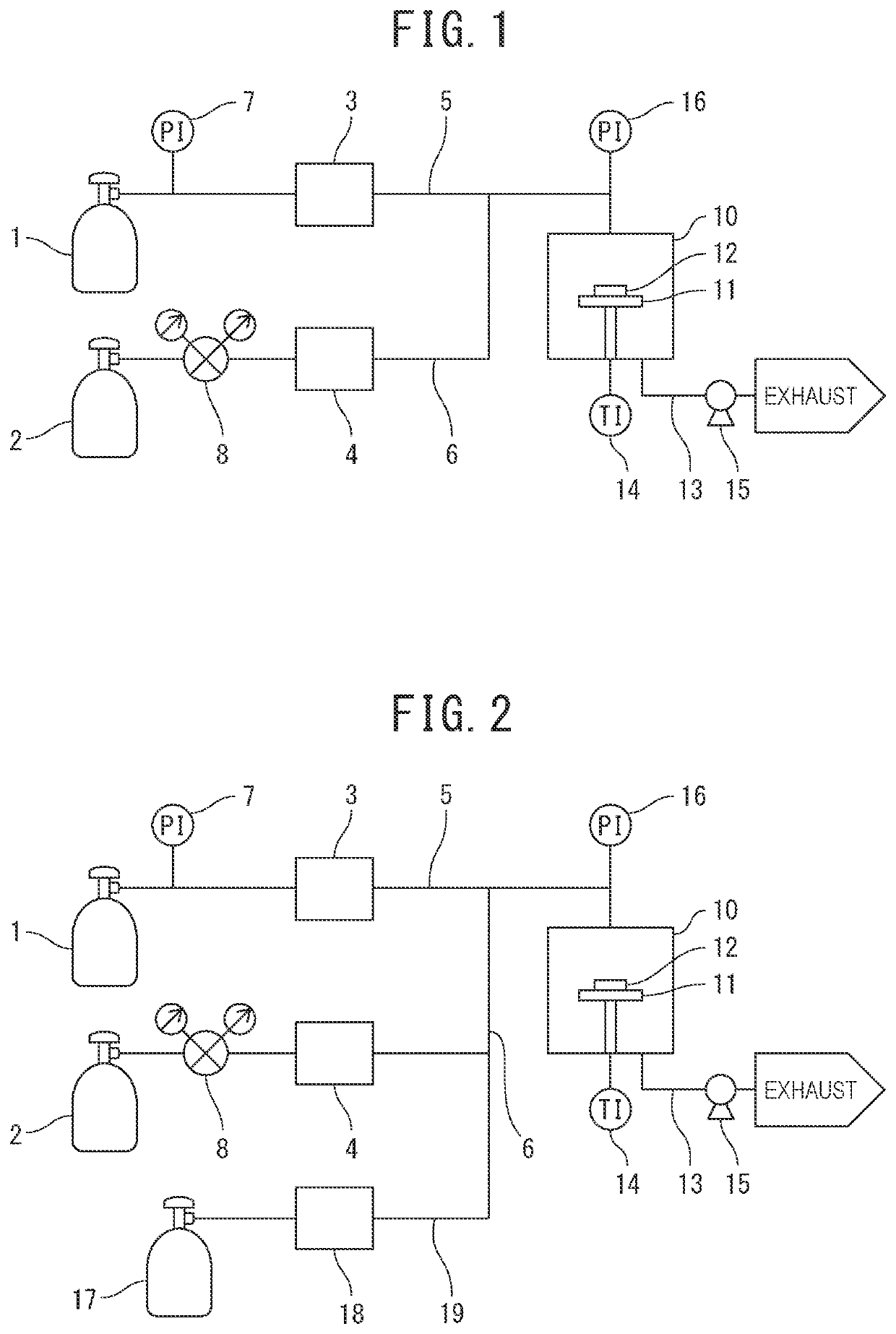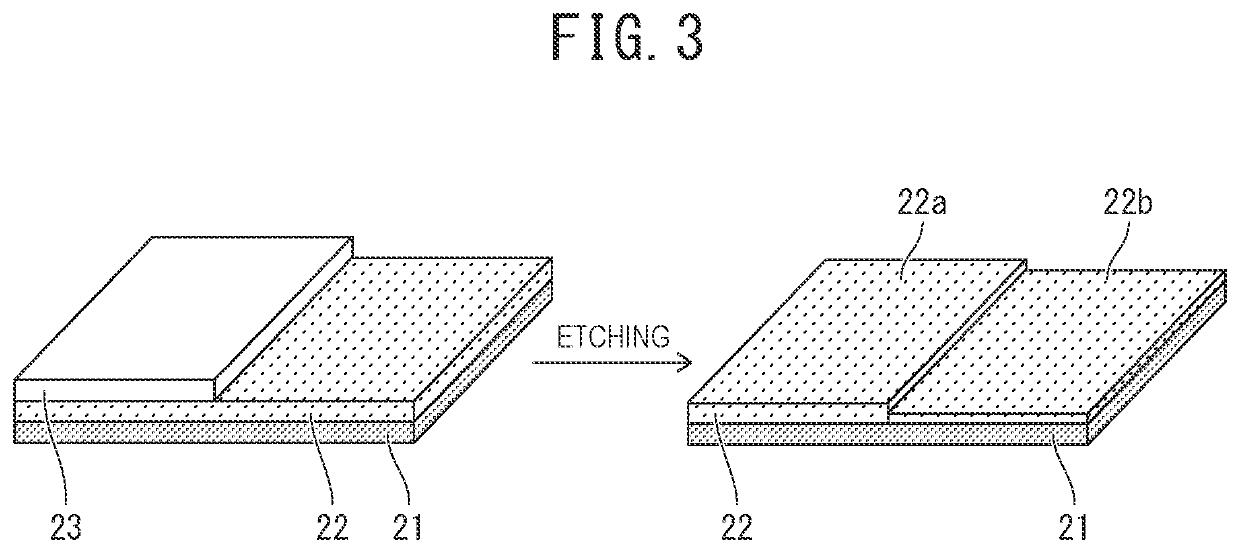Dry etching method, production method for semiconductor element, and cleaning method
a production method and technology for semiconductor elements, applied in the direction of cleaning of hollow articles, surface treatment compositions, chemistry apparatus and processes, etc., can solve the problems of loss of semiconductor element characteristics, heavy load on the manufacturing apparatus of semiconductor elements, and difficult-to-etch materials containing metals, etc., to achieve sufficient etching rate
- Summary
- Abstract
- Description
- Claims
- Application Information
AI Technical Summary
Benefits of technology
Problems solved by technology
Method used
Image
Examples
example 1-1
[0093]An etching object was etched by using an etching apparatus having substantially the same configuration as that of the etching apparatus of FIG. 1. A test piece (a member to be etched) used in Example 1-1 will be described with reference to FIG. 3.
[0094]A square silicon substrate 21 of 2 inches per side having a titanium oxide (TiO2) film 22 with a film thickness of 517 nm deposited thereon (manufactured by KST World Corporation) was prepared, and a rectangular nickel substrate 23 with dimensions of 1 inch×2 inches was bonded onto the titanium oxide film 22 by using grease (Demnum Grease L-200 manufactured by Daikin Industries, Ltd.) to create the test piece. The nickel substrate 23 was bonded so as to cover substantially half of the titanium oxide film 22 as illustrated in FIG. 3.
[0095]The test piece was placed on a stage inside a chamber of the etching apparatus, and the temperature of the stage was increased to 150° C. Subsequently, a bromine pentafluoride gas of a flow rate...
example 1-2
[0102]A test piece was etched in the same manner as in Example 1-1 except that iodine heptafluoride was used as the halogen fluoride, and a mixed gas formed by mixing an iodine heptafluoride gas of a flow rate of 50 mL / min and argon of a flow rate of 450 mL / min was used as the etching gas, and then the etching rate of the titanium oxide was calculated. The result is shown in Table 1.
example 1-3
[0103]A test piece was etched in the same manner as in Example 1-1 except that the temperature of the stage was set to 50° C., and then the etching rate of the titanium oxide was calculated. The result is shown in Table 1.
PUM
| Property | Measurement | Unit |
|---|---|---|
| temperature | aaaaa | aaaaa |
| temperature | aaaaa | aaaaa |
| pressure | aaaaa | aaaaa |
Abstract
Description
Claims
Application Information
 Login to View More
Login to View More - R&D
- Intellectual Property
- Life Sciences
- Materials
- Tech Scout
- Unparalleled Data Quality
- Higher Quality Content
- 60% Fewer Hallucinations
Browse by: Latest US Patents, China's latest patents, Technical Efficacy Thesaurus, Application Domain, Technology Topic, Popular Technical Reports.
© 2025 PatSnap. All rights reserved.Legal|Privacy policy|Modern Slavery Act Transparency Statement|Sitemap|About US| Contact US: help@patsnap.com


